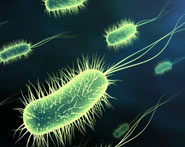


 النبات
النبات
 الحيوان
الحيوان
 الأحياء المجهرية
الأحياء المجهرية
 علم الأمراض
علم الأمراض
 التقانة الإحيائية
التقانة الإحيائية
 التقنية الحيوية المكروبية
التقنية الحيوية المكروبية
 التقنية الحياتية النانوية
التقنية الحياتية النانوية
 علم الأجنة
علم الأجنة
 الأحياء الجزيئي
الأحياء الجزيئي
 علم وظائف الأعضاء
علم وظائف الأعضاء
 الغدد
الغدد
 المضادات الحيوية
المضادات الحيوية|
Read More
Date: 31-12-2015
Date: 16-5-2016
Date: 10-5-2016
|
There Can Be Biases in Mutation, Gene Conversion, and Codon Usage
KEY CONCEPTS
-Mutational bias can account for a high AT content in organismal genomes.
-Gene conversion bias, which tends to increase GC content, can act in partial opposition to the mutational bias.
-Codon bias might be a result of adaptive mechanisms that favor particular sequences, and of gene conversion bias.
As discussed in the section DNA Sequences Evolve by Mutation and a Sorting Mechanism earlier in this chapter, the probability of a particular mutation is a function of the probability that a particular replication error or DNA-damaging event will occur and the probability that the error will be detected and repaired before the next DNA replication. To the extent that there is bias in these two events, there is bias in the types of mutations that occur (for example, a bias for transition mutations over transversion mutations despite the greater number of possible transversions).
Observations of the distributions of types of mutations over a taxonomically wide range of species (including prokaryotes and unicellular and multicellular eukaryotes), assessed by direct
observation of mutational variants or by comparing sequence differences in pseudogenes, show a consistent pattern of a bias toward a high AT genomic content. The reasons for this are complex, and different mechanisms might be more or less important in different taxonomic groups, but there are two likely mechanisms. First, the common mutational source of spontaneous deamination of cytosine to uracil, or of 5-methylcytosine to thymine, promotes the transition mutation of C-G to T-A. Uracil in DNA is more likely to be repaired than thymine , so methylated cytosines (often found in CG doublets) are not only mutation hotspots but specifically biased toward producing a T-A pair.
Second, oxidation of guanine to 8-oxoguanine can result in a C-G to A-T transversion because 8-oxoguanine pairs more stably with adenine than with cytosine.
Despite this mutational bias, in analyses in which the expected equilibrium base composition is predicted from the observed rates of specific types of mutations, the observed AT content is generally lower than expected. This suggests that some mechanism or mechanisms are working to counteract the mutational bias toward A-T. One possibility is that this is adaptive; a highly biased base composition limits the mutational possibilities and consequently limits evolutionary potential. However, as discussed next, there might be a nonadaptive explanation.
A second possible source of bias in genomic base composition is gene conversion, which occurs when heteroduplex DNA containing mismatched base pairs, often resulting from the resolution of a Holliday junction during recombination or double-strand break repair, is repaired using the mutated strand as a template . Interestingly, observations of gene conversion events in animals and fungi show a clear bias toward G-C, though the mechanism is unclear. In support of this observation, chromosomal regions of high recombinational activity show more mutations to G-C, and regions with low recombinational activity tend to be A-T rich. The observed rates of gene conversion per site tend to be of the same order of magnitude or higher than mutation rates; thus gene conversion bias alone might account for the lower than expected AT content being driven higher by mutational bias. Gene conversion bias might also be partly responsible for another universally observed bias in genome composition, codon bias .
Due to the degeneracy of the genetic code, most of the amino acids found in polypeptides are represented by more than one codon in a genetic message. However, the alternate codons are not generally found in equal frequencies in genes; particularly in highly expressed genes, one codon of the two, four, or six that call for a particular amino acid is often used at a much higher frequency than the others. One explanation for this bias is that a particular codon might be more efficient at recruiting an abundant tRNA type, such that the rate or accuracy of translation is greater with higher usage of that codon. There might be additional adaptive consequences of particular exon sequences: Some might contribute to splicing efficiency, form secondary structures that affect mRNA stability, or be less subject to frameshift mutations than others (e.g., mononucleotide repeats that promote slippage). However, biased gene conversion remains a (nonadaptive) possibility, as well. Intriguingly, the synonymous site for most codons is the 3′ end, and high-usage codons in eukaryotes almost always end in G or C, as is consistent with the hypothesis that biased gene conversion drives codon bias. Clearly, the causes of codon bias are complex and might involve both adaptive and nonadaptive mechanisms.



|
|
|
|
كل ما تود معرفته عن أهم فيتامين لسلامة الدماغ والأعصاب
|
|
|
|
|
|
|
ماذا سيحصل للأرض إذا تغير شكل نواتها؟
|
|
|
|
|
|
|
جامعة الكفيل تناقش تحضيراتها لإطلاق مؤتمرها العلمي الدولي السادس
|
|
|